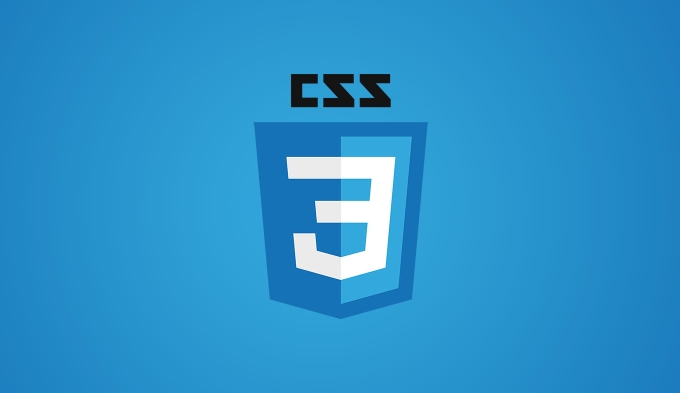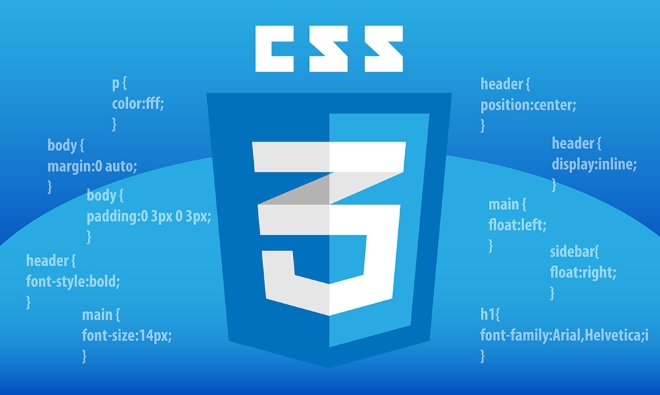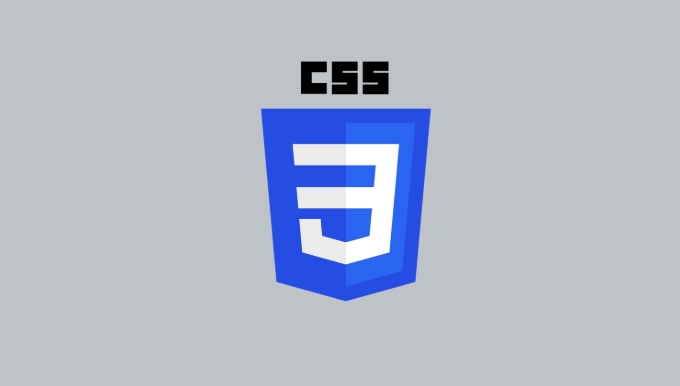 <p> When you want to target specific elements in a group without adding extra classes or IDs, CSS structural pseudo-classes like
<p> When you want to target specific elements in a group without adding extra classes or IDs, CSS structural pseudo-classes like :nth-child() comes in really handy. These selectors let you apply styles based on the position of an element among its siblings, which is super useful for things like zebra-striping tables, styling every other item in a list, or making layout adjustments without touching your HTML.

How :nth-child() Actually Works
<p> At first glance, :nth-child() might seem a bit confusing — especially with that odd-looking formula an b . But once you get the hang of it, it's pretty straightforward.
 <p> Let's break it down:
<p> Let's break it down:
-
<li> The basic idea is that
:nth-child(n) selects the nth child of its parent.
<li> You can use formulas like 2n 1 or keywords like odd and even .

li:nth-child(2n) {
background-color: #f0f0f0;
}<p> This would select every even-numbered <li> in a list and give it a light gray background — perfect for altering row colors in a table or list layout.<p> One common mistake is thinking :nth-child() looks only at elements of the same type. It actually counts all children, regardless of tag type. So if you have a mix of <p> , <div> , and <span> inside a container, :nth-child() will count them all.Other Useful Structural Pseudo-Classes
<p> While:nth-child() is powerful, there are several related pseudo-classes that are worth knowing:- <li>
:first-child – targets the first child if it matches the element type.<li> :last-child – same logic, but for the last child.<li> :nth-of-type() – similar to :nth-child() , but only considers elements of the matching type.<li> :only-child – apply if the element is the only one inside its parent.<div> <p>First paragraph</p> <span>Just a span</span> <p>Second paragraph</p> </div><p> Then:
p:nth-child(1) { color: red; } /* Won't match anything because first child is a <p>, but it's not ap:nth-child(1) */
p:nth-of-type(1) { color: blue; } /* This matches the first <p> */
p:nth-of-type(2) { color: green; } /* Matches the second <p> */<p> So when working with mixed content, :nth-of-type() is usually more reliable for targeting specific element types.Practical Uses in Layouts and Lists
<p> These selectors are especially handy in real-world layouts where you want to tweak spacing or visual hierarchy without bloating your HTML with extra classes.<p> Some examples:- <li><p> Remove margin from the last item in a grid or flexbox layout:
.card:last-child {
margin-right: 0;
}<li><p> Style the first paragraph differently (like making it larger): p:first-of-type {
font-size: 1.2em;
font-weight: bold;
}<li><p> Highlight the first and last columns in a table: td:first-child {
border-left: 1px solid #ccc;
}
td:last-child {
border-right: 1px solid #ccc;
}<p> They're also great for responsive design tweaks — say you want to hide certain items on small screens based on their position, or adjust padding on mobile only for specific children.
A Few Gotchas to Keep in Mind
<p> Like any CSS feature, these selectors can trip you up if you're not careful. <p> Here are a few things to watch out for:-
<li> Whitespace matters — sometimes an invisible text node (like a line break) can throw off your count.
<li> Performance isn't usually an issue , but avoid overusing complex
:nth-child() patterns on large pages.
<li> Test visually — browser dev tools sometimes make it hard to see what's being selected, so double-check how your styles are applied.
<p> That's basically it. Once you get used to using structural pseudo-classes, they become second nature — and they save you from writing extra markup or JavaScript just to handle simple styling logic.
The above is the detailed content of Using CSS nth-child and other structural pseudo-classes. For more information, please follow other related articles on the PHP Chinese website!

Hot AI Tools

Undress AI Tool
Undress images for free

Undresser.AI Undress
AI-powered app for creating realistic nude photos

AI Clothes Remover
Online AI tool for removing clothes from photos.

Clothoff.io
AI clothes remover

Video Face Swap
Swap faces in any video effortlessly with our completely free AI face swap tool!

Hot Article

Hot Tools

Notepad++7.3.1
Easy-to-use and free code editor

SublimeText3 Chinese version
Chinese version, very easy to use

Zend Studio 13.0.1
Powerful PHP integrated development environment

Dreamweaver CS6
Visual web development tools

SublimeText3 Mac version
God-level code editing software (SublimeText3)
 CSS tutorial for creating loading spinners and animations
Jul 07, 2025 am 12:07 AM
CSS tutorial for creating loading spinners and animations
Jul 07, 2025 am 12:07 AM
There are three ways to create a CSS loading rotator: 1. Use the basic rotator of borders to achieve simple animation through HTML and CSS; 2. Use a custom rotator of multiple points to achieve the jump effect through different delay times; 3. Add a rotator in the button and switch classes through JavaScript to display the loading status. Each approach emphasizes the importance of design details such as color, size, accessibility and performance optimization to enhance the user experience.
 Addressing CSS Browser Compatibility issues and prefixes
Jul 07, 2025 am 01:44 AM
Addressing CSS Browser Compatibility issues and prefixes
Jul 07, 2025 am 01:44 AM
To deal with CSS browser compatibility and prefix issues, you need to understand the differences in browser support and use vendor prefixes reasonably. 1. Understand common problems such as Flexbox and Grid support, position:sticky invalid, and animation performance is different; 2. Check CanIuse confirmation feature support status; 3. Correctly use -webkit-, -moz-, -ms-, -o- and other manufacturer prefixes; 4. It is recommended to use Autoprefixer to automatically add prefixes; 5. Install PostCSS and configure browserslist to specify the target browser; 6. Automatically handle compatibility during construction; 7. Modernizr detection features can be used for old projects; 8. No need to pursue consistency of all browsers,
 What is the difference between display: inline, display: block, and display: inline-block?
Jul 11, 2025 am 03:25 AM
What is the difference between display: inline, display: block, and display: inline-block?
Jul 11, 2025 am 03:25 AM
Themaindifferencesbetweendisplay:inline,block,andinline-blockinHTML/CSSarelayoutbehavior,spaceusage,andstylingcontrol.1.Inlineelementsflowwithtext,don’tstartonnewlines,ignorewidth/height,andonlyapplyhorizontalpadding/margins—idealforinlinetextstyling
 Creating custom shapes with css clip-path
Jul 09, 2025 am 01:29 AM
Creating custom shapes with css clip-path
Jul 09, 2025 am 01:29 AM
Use the clip-path attribute of CSS to crop elements into custom shapes, such as triangles, circular notches, polygons, etc., without relying on pictures or SVGs. Its advantages include: 1. Supports a variety of basic shapes such as circle, ellipse, polygon, etc.; 2. Responsive adjustment and adaptable to mobile terminals; 3. Easy to animation, and can be combined with hover or JavaScript to achieve dynamic effects; 4. It does not affect the layout flow, and only crops the display area. Common usages are such as circular clip-path:circle (50pxatcenter) and triangle clip-path:polygon (50%0%, 100 0%, 0 0%). Notice
 Styling visited links differently with CSS
Jul 11, 2025 am 03:26 AM
Styling visited links differently with CSS
Jul 11, 2025 am 03:26 AM
Setting the style of links you have visited can improve the user experience, especially in content-intensive websites to help users navigate better. 1. Use CSS's: visited pseudo-class to define the style of the visited link, such as color changes; 2. Note that the browser only allows modification of some attributes due to privacy restrictions; 3. The color selection should be coordinated with the overall style to avoid abruptness; 4. The mobile terminal may not display this effect, and it is recommended to combine it with other visual prompts such as icon auxiliary logos.
 How to create responsive images using CSS?
Jul 15, 2025 am 01:10 AM
How to create responsive images using CSS?
Jul 15, 2025 am 01:10 AM
To create responsive images using CSS, it can be mainly achieved through the following methods: 1. Use max-width:100% and height:auto to allow the image to adapt to the container width while maintaining the proportion; 2. Use HTML's srcset and sizes attributes to intelligently load the image sources adapted to different screens; 3. Use object-fit and object-position to control image cropping and focus display. Together, these methods ensure that the images are presented clearly and beautifully on different devices.
 Demystifying CSS Units: px, em, rem, vw, vh comparisons
Jul 08, 2025 am 02:16 AM
Demystifying CSS Units: px, em, rem, vw, vh comparisons
Jul 08, 2025 am 02:16 AM
The choice of CSS units depends on design requirements and responsive requirements. 1.px is used for fixed size, suitable for precise control but lack of elasticity; 2.em is a relative unit, which is easily caused by the influence of the parent element, while rem is more stable based on the root element and is suitable for global scaling; 3.vw/vh is based on the viewport size, suitable for responsive design, but attention should be paid to the performance under extreme screens; 4. When choosing, it should be determined based on whether responsive adjustments, element hierarchy relationships and viewport dependence. Reasonable use can improve layout flexibility and maintenance.
 What are common CSS browser inconsistencies?
Jul 26, 2025 am 07:04 AM
What are common CSS browser inconsistencies?
Jul 26, 2025 am 07:04 AM
Different browsers have differences in CSS parsing, resulting in inconsistent display effects, mainly including the default style difference, box model calculation method, Flexbox and Grid layout support level, and inconsistent behavior of certain CSS attributes. 1. The default style processing is inconsistent. The solution is to use CSSReset or Normalize.css to unify the initial style; 2. The box model calculation method of the old version of IE is different. It is recommended to use box-sizing:border-box in a unified manner; 3. Flexbox and Grid perform differently in edge cases or in old versions. More tests and use Autoprefixer; 4. Some CSS attribute behaviors are inconsistent. CanIuse must be consulted and downgraded.






